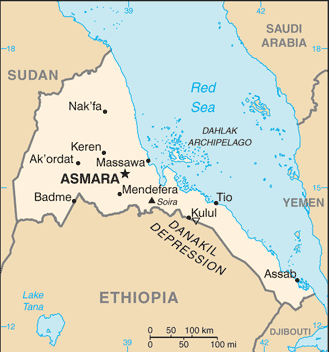Eritrea

The State of Eritrea has an estimated population of 5.2 million (UN, 2010). The capital is Asmara. Eritrea has an area of 117,400 sq km (45,300 sq miles). The main languages are Tigrinya, Tigre, Arabic, and English.
Eritrea was an Italian colony from 1890 until 1941. The British defeated the Italians and placed Eritrea under its military administration. Eritrea’s long war of independence with its neighbour, Ethiopia, left tens of thousands soldiers killed. A peace agreement was signed in 2000, which effectively ended the conflict.
The Eritrean government has ratified international conventions related to women's rights and is committed to gender equality. The legislation reserves 30% of seats for women in provincial, district administration and national parliament. There are many forms of gender-based violence in Eritrea such as early marriage (common in rural areas), domestic violence and female genital mutilation (FGM). FGM is considered as a serious problem in Eritrea affecting 89% of women.
- Eritrea has not signed or ratified the Protocol to the African Charter on Human and Peoples' Rights on the Rights of Women in Africa (The Maputo Protocol).
- The Convention on the Elimination of All Forms of Discrimination against Women (CEDAW) was ratified by Eritrea on the 5th of September 1995.
- Eritrea has not yet adopted a National Action Plan on United Nations Security Council Resolution 1325 (UNSCR 1325).
- From 31 July 2000 to 31 July 2008, there was a UN peacekeeping mandate in Eritrea: United Nations Mission in Ethiopia and Eritrea.
